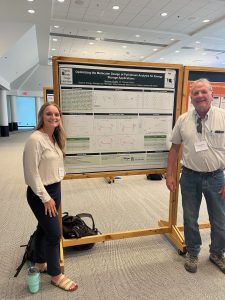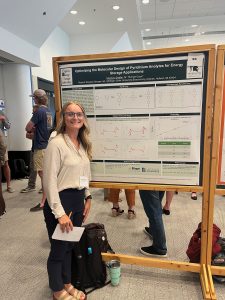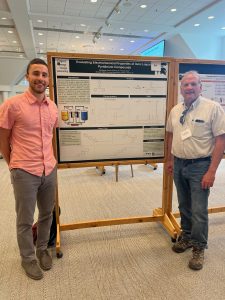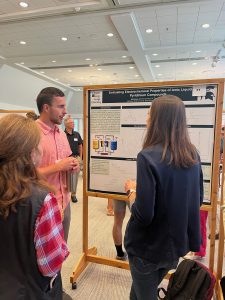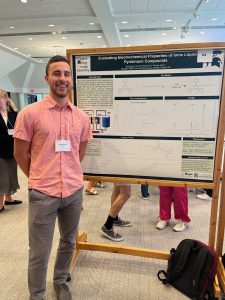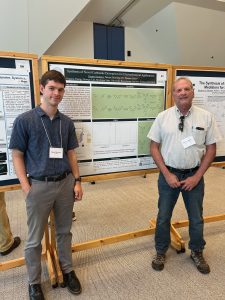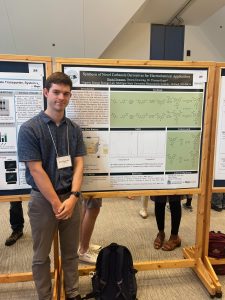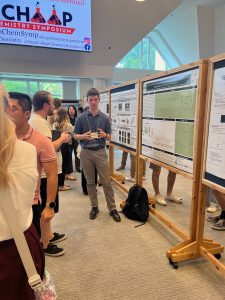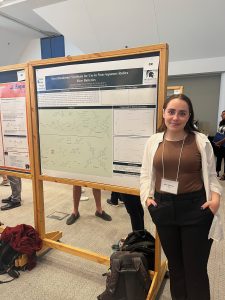Optimizing the molecular design of pyridinium anolytes for energy storage applications
Madison Shaffer and Dr. Thomas Guarr
Redox flow batteries (RFBs) offer a safe and environmentally friendly alternative for grid-scale energy storage applications. The organic materials used in these batteries must meet certain criteria in order for the battery to work efficiently. Specifically, the anolyte must have a low reduction potential, stable reduced state, and high solubility. A well-known pyridinium salt, methyl viologen, is commonly used as an anolyte, and previous work in our lab has led to the discovery of new pyridinium salts that offer lower reduction potentials and greater stability. However, the solubility of these systems is typically low, limiting the energy density of RFBs incorporating such materials. It has recently been discovered that small changes in molecular structure can cause an increase in C-H – pi-interactions, which results in a dramatic increase in solubility (1). This work emphasizes the optimization of the molecular design of pyridinum anolytes and the effects it has on overall solubility.
Madison graduated from Alma College (another one!) this spring with a degree in Chemistry. We are really excited that she has decided to stick around our lab for a while and continue to help us with some great research. Thanks Madison! I hope you enjoy it here. We love having you.
